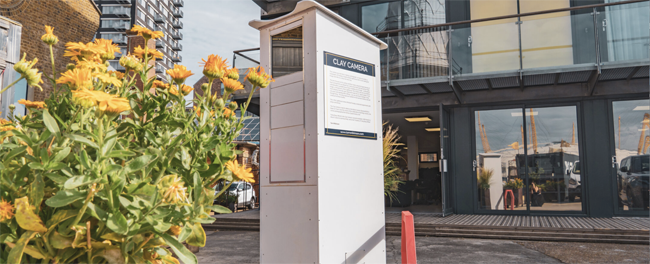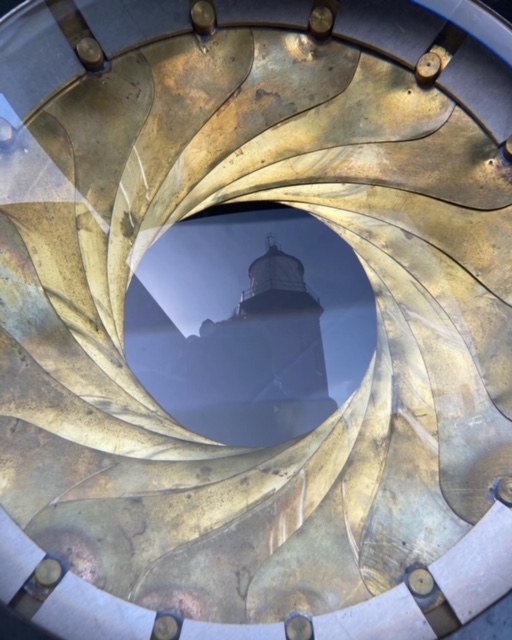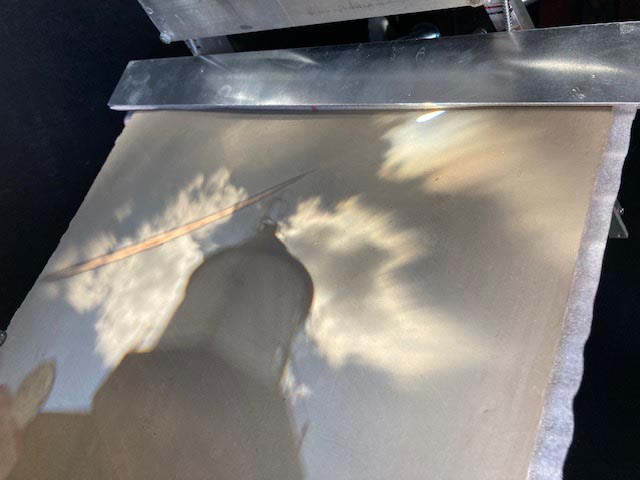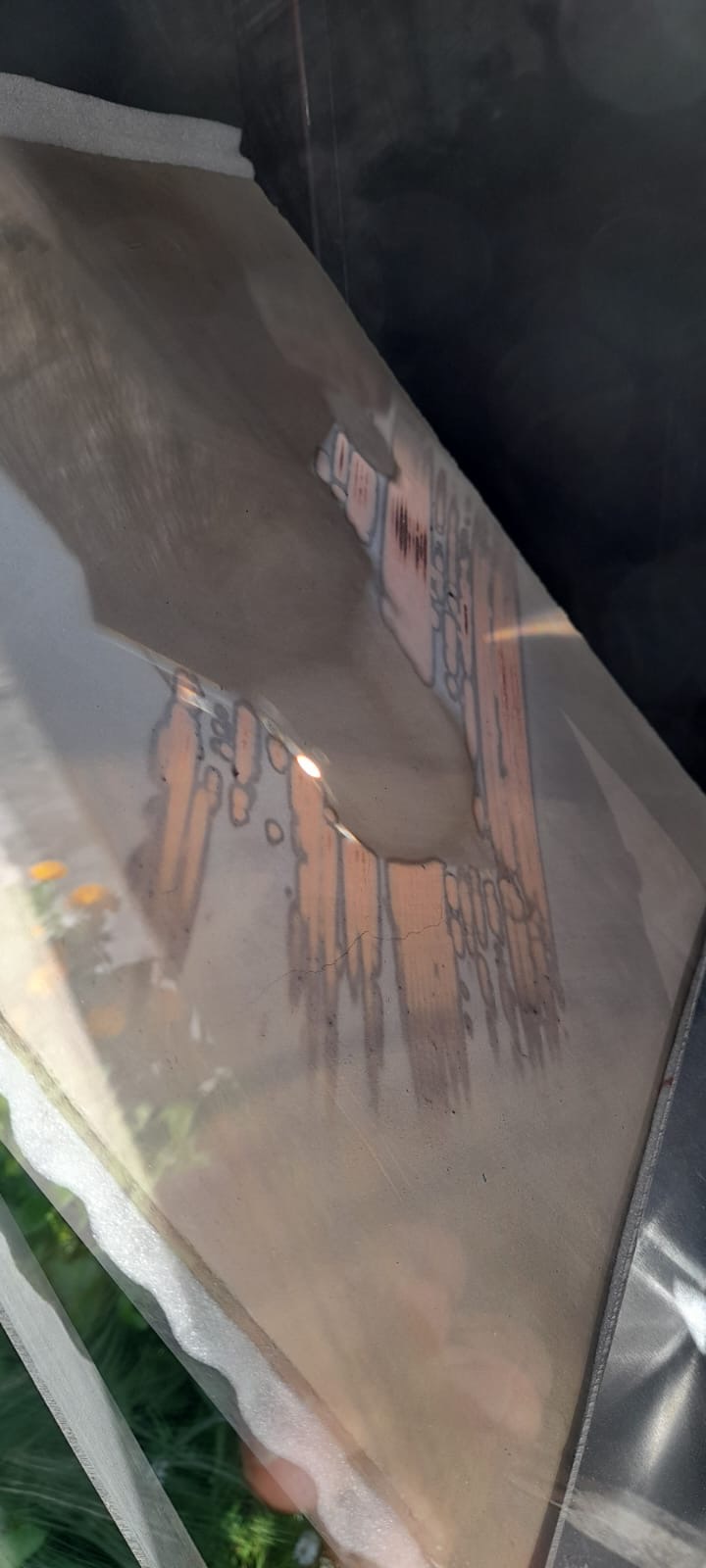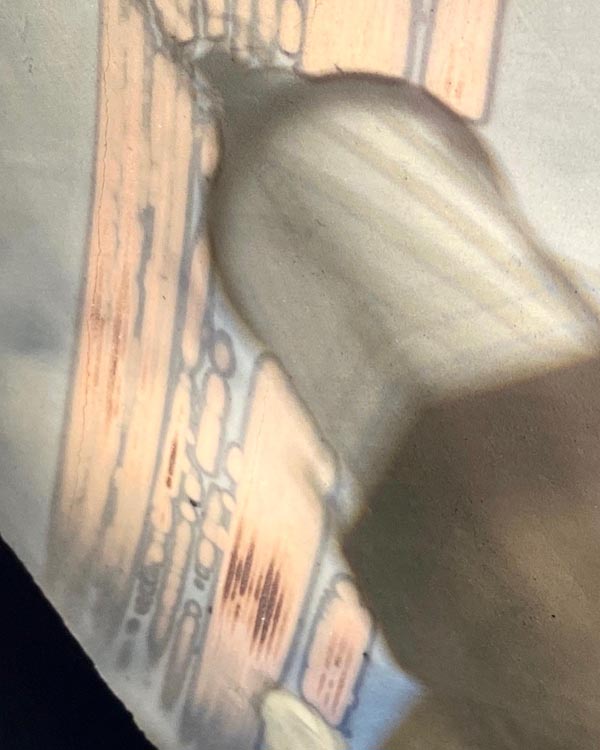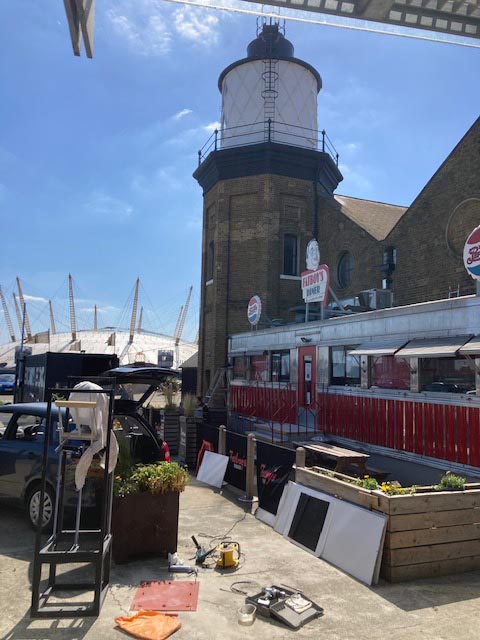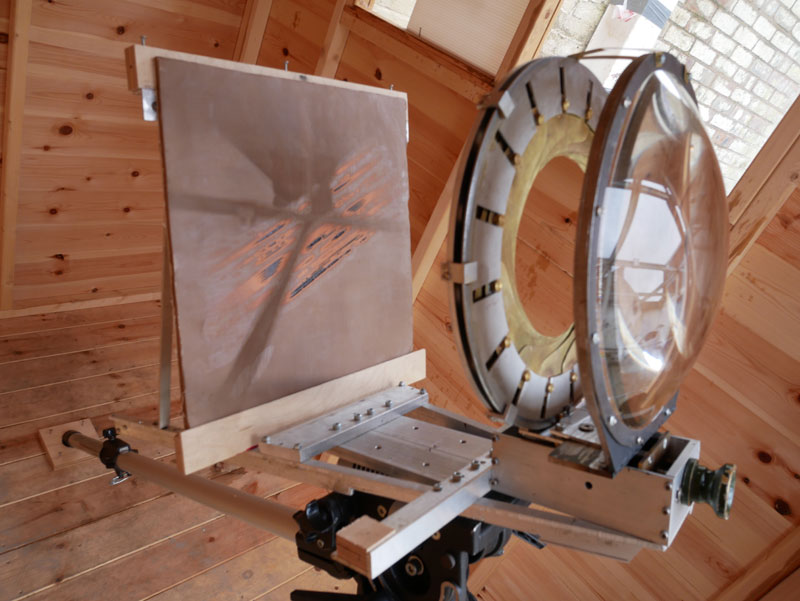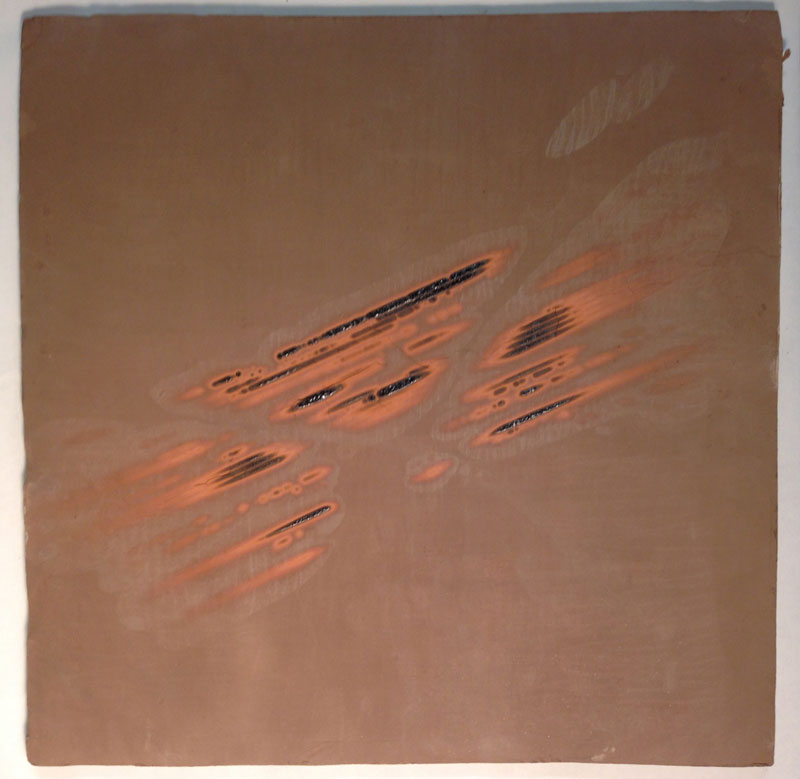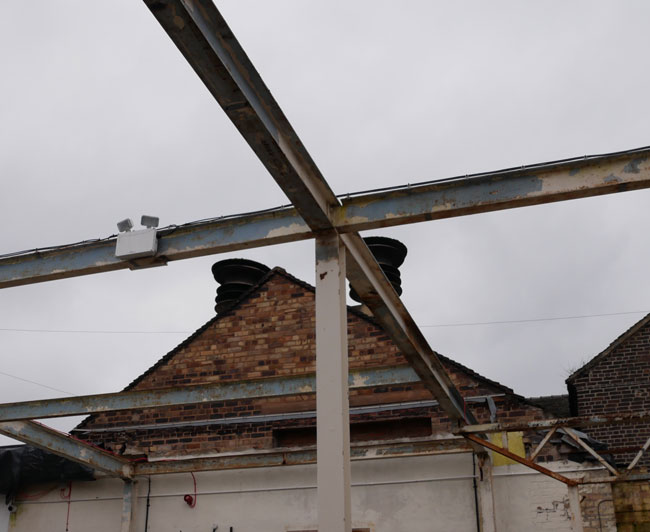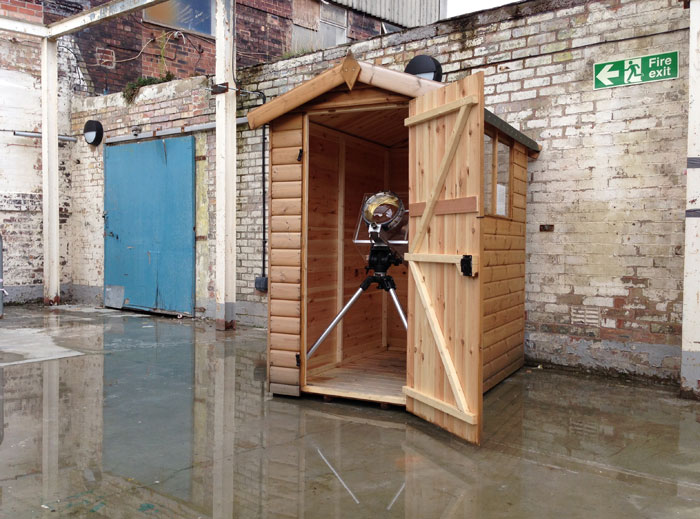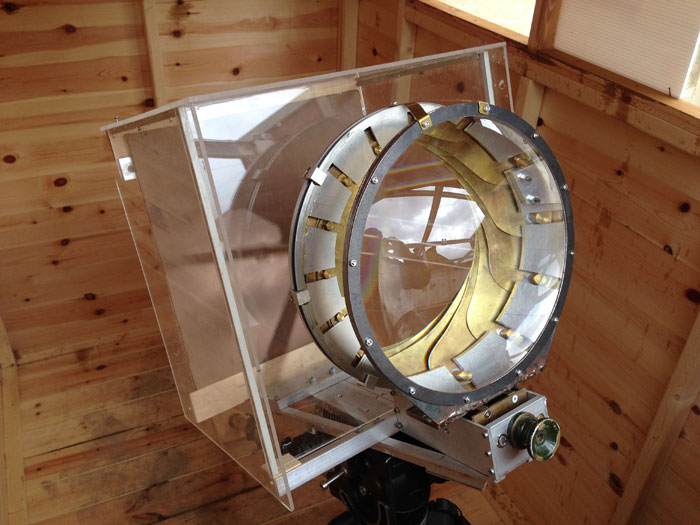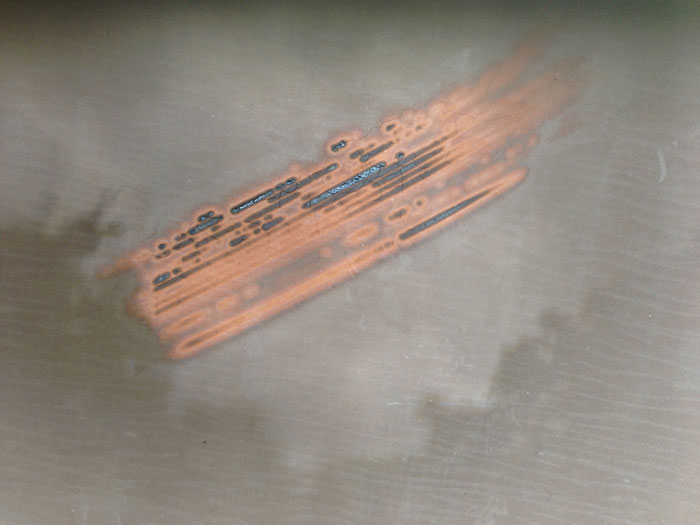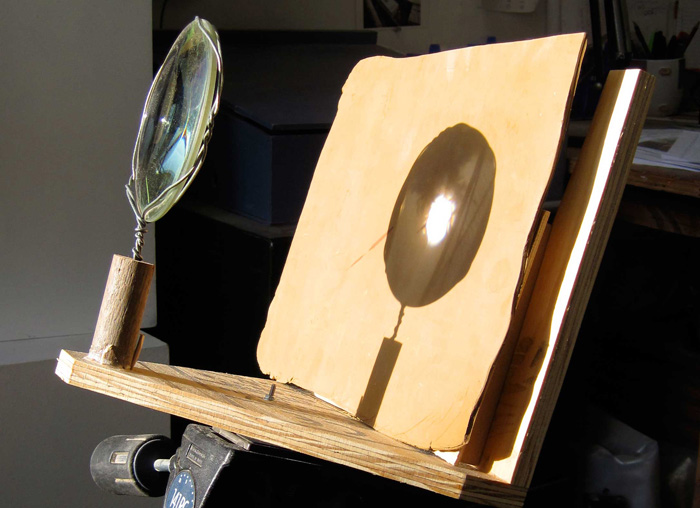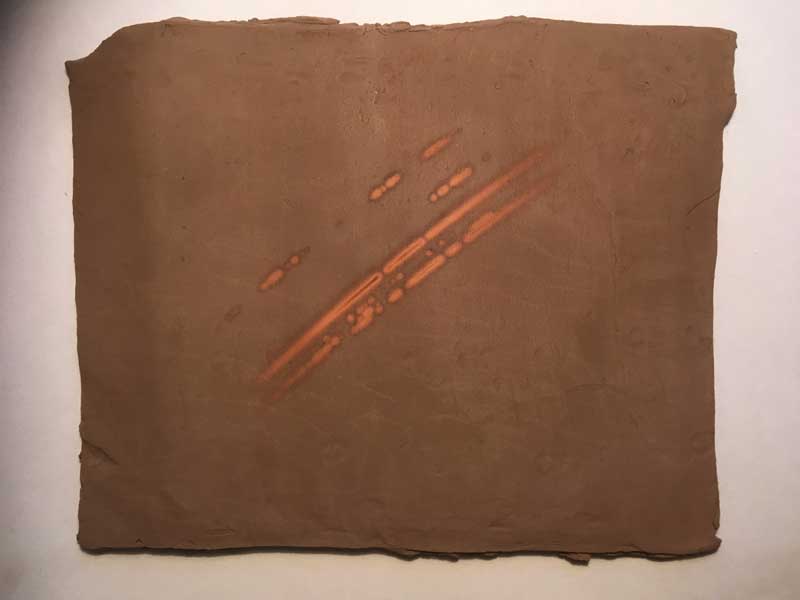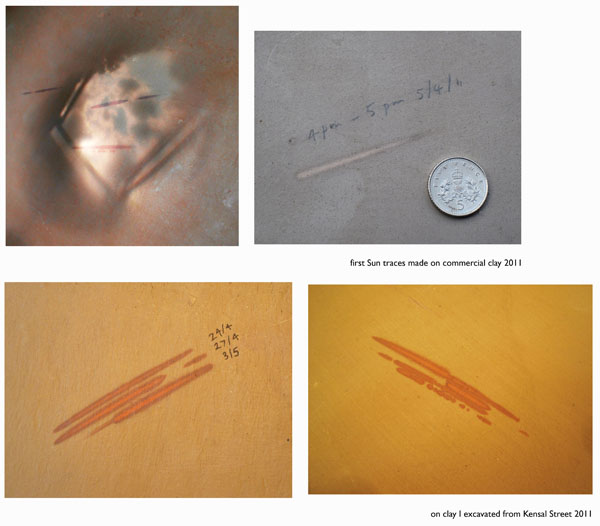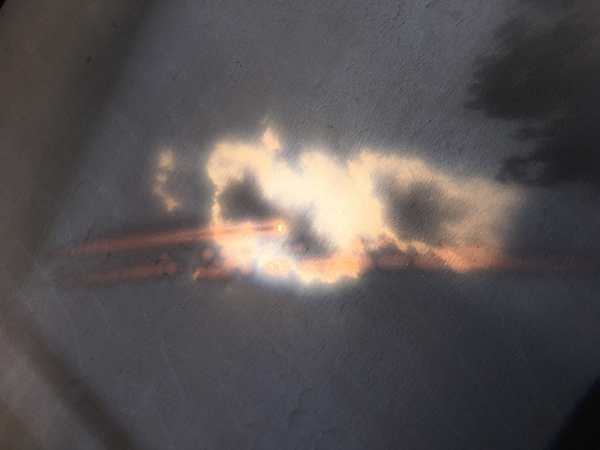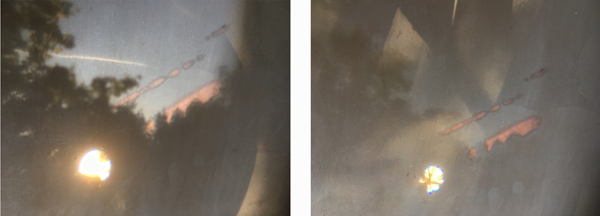| home | current | sculpture | automata | meta | workshops | exhibitions | contact |
|
The Clay Camera - a timed based installation The Clay Camera took its first clay photgraph at Trinity Buoy Wharf last year capturing the image of Faraday’s Experimental Lighthouse in Leamoiuth, London. The long exposure started on the Summer Solstice, when the sun was at its highest. The Camera is now in Wales photographing an Ash tree. For up to date info please click here on my Instagram page For a simple explanation just how the Camera works please read on; A large magnifying glass focuses the Sun on the clay plate. As the Sun travels across the sky it leaves a trace, fired into the of the clay. As the Sun goes behind the subject each day, it gradually builds up a silhouetted image or simalcrum of the subject. The long exposure starts on the summer solstice, when the sun is at its highest, and finishes around November, when the Sun is too low to cook the Clay. Below shows the first mark made on the Summer Solstice 2022.
The Clay The London clay was dug from the ground very nearby where the camera is sited. This is extremely important to the project to use indigenous clay, as indigenous as possible. It was excavated from a deep hole made by a construction site on Orchard Place. I was amazed just hope pure the clay was - needing little refining - just picking out a few stones and organic matter. Once wedged (thrown on a hard slab, squashed and kneaded to remove air bubbles) it could be rolled out. The drying process was laborious as I wanted the plate to be a flat as possible so this process took weeks of careful extracting the moisture very slowly - each day replacing sheets of newspaper.
The Image The focused sun light transforms the clay from muddy grey to salmon pink - the delicate trace is minerals in the clay metamorphosed! Using the sun and clay to make an image is taking photography back to its most primal of levels - had the stone-age cave dweller had a lens he\she could of captured images of their world. The black streaks were from the hotest days the UK has ever had on record - 104.5 degrees f. on july the 19th 2022. Like a normal camera and your eye, the image is projected onto a silicone chip or your retina upside down and back to front. This is a draw-back, however as the lighthouse is such a recognisable building even its silhouette, inverted, should be a recognisable image of this iconic building. Prints will be made from the clay plate with the image corrected. Below - installating the camera and box.
The Lighthouse I wanted to photograph this subject because of its special significance to science. Never used for guiding ships it was where Michael Faraday developed lenses, lighting but mainly techniques of ventilation for the oil lampsproviding the intense light used in all the Trinity lighthouses. Future I hope to continue this project taking photographs, sometimes referred to as Solargraphs, or Heliograph, all around the country using clay from as near as possible to the subject. Please get in touch if you’d like to commission me or have the project as a residency. The main criteria is that the sun/subject/camera position relationship be viable. I’d like to to capture the image other buildings of significance such as Talbot House where Fox Talbot took the first photgraph in the UK. I’d like to give special thanks to Eric Reynolds and Richard Cripps at Urban Space, Alison Cooke for her technical advice on clay and the Trinity Buoy Wharf Trust for funding the project. To see the installation (On site until November/December 2022): Canary Wharf Jubilee Line. Exit from station - Bow Creek How stable is the image and clay plate The image left on the clay is permanent, afterall it's baked in at 500 degress. It’s taken months of experimentation to find a way to reinforce the dried clay plate so it can be mounted behind glass. The very first photograph, taken in 2019 at the British Ceramics Biennial, hangs on my wall, completely intact and stable. Finding a subject To find a subject for the Clay Camera is not easy as the subject of the photograph has to be of a certain size. The major consideration is that its alignment with the afternoon Sun and position for the camera box have to be ideal. I like to use clay that is near the spot where the Photograph takes place - so far this is never been difficult as Clay is so ubiquitous. I was excited to find a perfect place in the courtyard, of the Greenwich Observatory. Clay Camera - debut installation at the British Ceramic Biennial This is the Clay Camera (aka Sun Firing) on the last day of the installation at the 2019 British Ceramic Biennial in Stoke-on-Trent. The rain-cover is removed showing an image clearly on the clay plate of the roof structure at the iconic Spode Works. Streaking accross are the sun-traces fired into the surface, but not where the roof structure is, leaving a negative, or silhouette of the subject. This is the first, actual recognisable, image taken with my clay camera and its debut installation! This homemade camera has
Below is the clay plate the correct way up. It measures 32cm square and shows the silhouette of the roof structure.
The roof structure and ventilators at Spode Works. The first subject for a long duration exposure
For help with this whole project I'd like to specially thank the following: Alison Cooke for rekindling my entusiasm for the project and supplying me with Thames Tideway clay.
Early experiments
To obtain the image of a whole tree will be technically challenging, to say the least, as the image is formed as the sun passes
Above: Taken over one week of the heatwave, last summer
Early tests
The first plate is pure London clay. Alison Cooke, the experimental ceramicist, kindly provided me with advice and clay I've had a recent and very exciting breakthrough ( below) a new experiment has worked whereby the camera is capable
|
||
